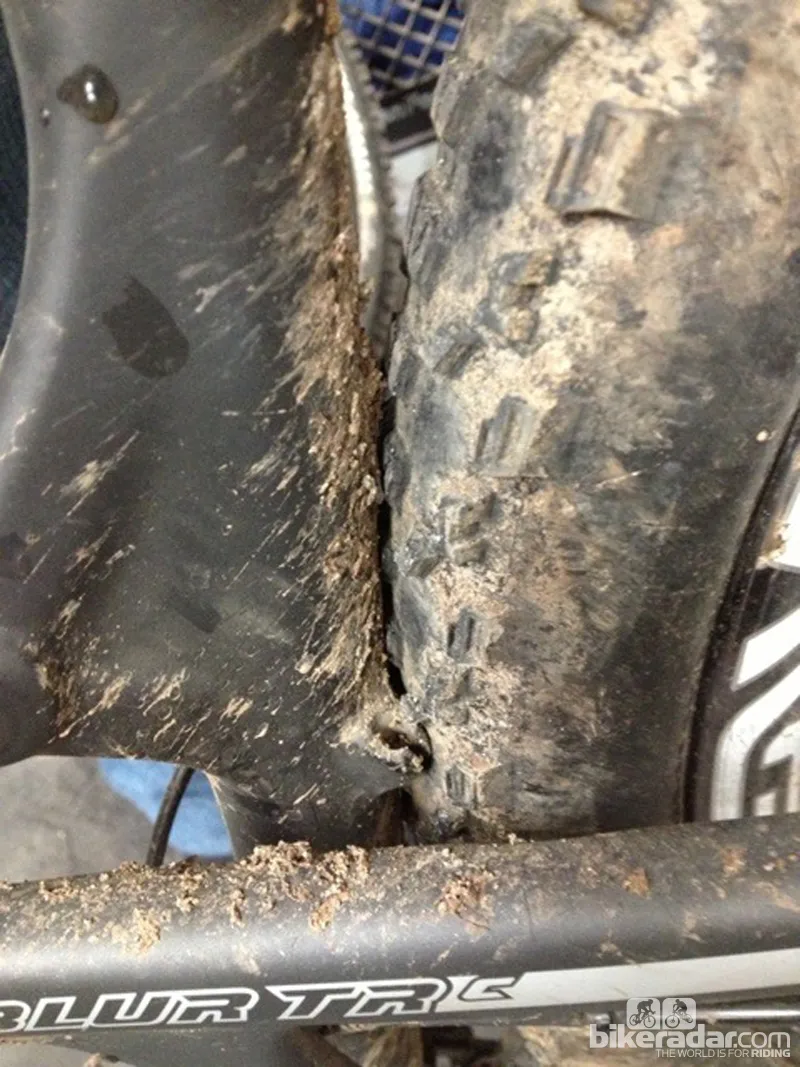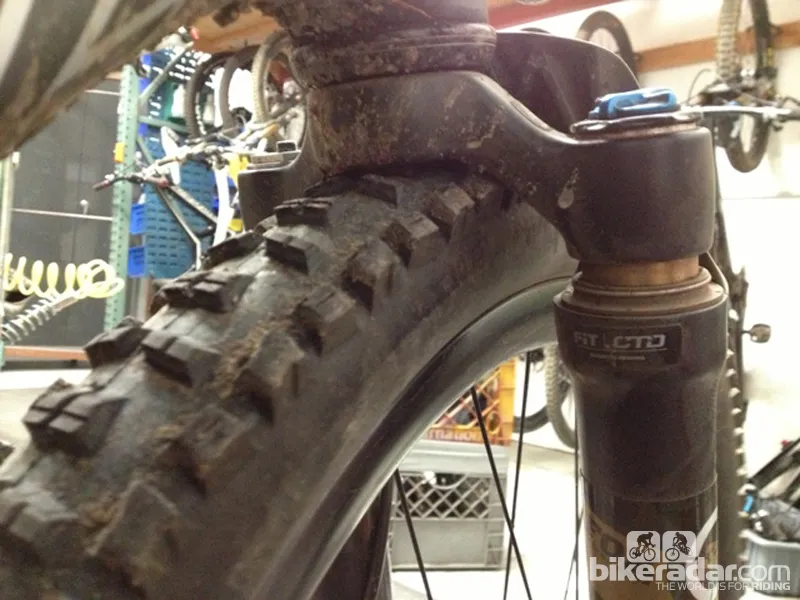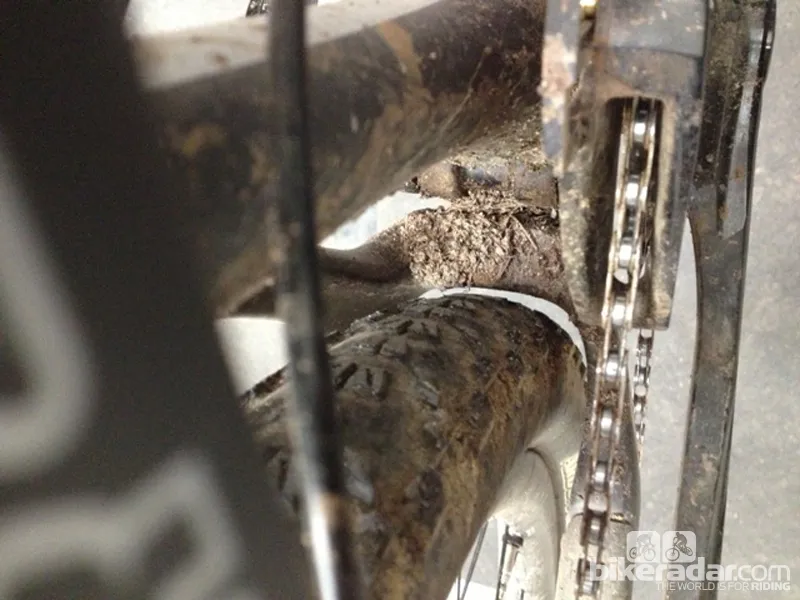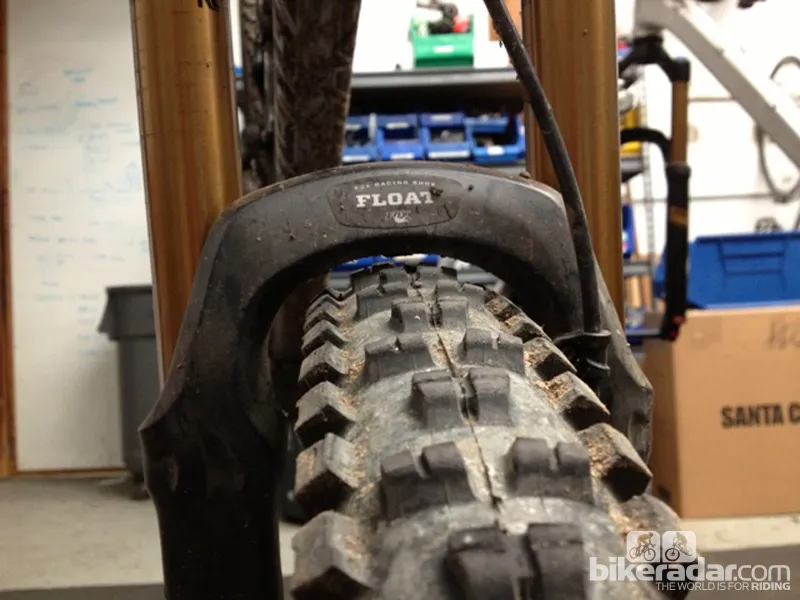[Editor's note: Trail Tech is a new Q&A column by longtime mechanic and technical mountain bike editor Josh Patterson. Here, he fields questions from Ask BikeRadar with helpful, practical advice. Got a question for him? Punch it in to Ask BikeRadar, or email him at Josh@BikeRadar.com.]
Question: I’m curious about 650b wheels, but not quite ready to buy a new trail bike. I’ve read on a lot of forums that it’s possible to convert a 26-inch bike to a 650b. Is it worth converting my existing bike to see what all the fuss is about?
Answer: Possible? Sometimes. Prudent? Well, that’s another matter. Let me suggest five reasons not to do so below.
You are not alone in wanting to convert your existing 26-inch trail bike to a 650b-wheeled rig. The desire to modify existing 26-inch trail bikes to 650b is greater than ever, as more riders want to test the waters before jumping in and purchasing one of the many 650b models that will be available in the coming months.
There’s a lot of appeal—particularly to your wallet—to squeezing a larger wheel into the frame you already own. But before you go and start dismantling a perfectly good 26-inch bike, here are a few things to consider.
Five reasons NOT to convert your 26in trail bike to a 650b
1. Not a sure thing
There are countless forum threads devoted to cramming slightly-larger-than-appropriate wheels into 26-inch frames. Much of the forum chatter about conversions centers on figuring out which frames and forks are suitable for conversion.
There’s no guarantee your 26-inch frame will accommodate 650b wheels. You didn’t mention what bike you own. If you happen to own a Santa Cruz Blur TRc or an Ibis Mojo HD—the two most popular bikes for 650b conversion—then it is doable, though both companies agree it is not ideal.
2. Just because the wheel fits doesn’t mean it will work
You’re not out of the woods just because your bike can accommodate 650b wheels and tires. While it may look like it will work in the repair stand, the real test is when you empty all the air from the front and rear suspension. On full compression the rear wheel may hit the seat tube. Even more worrisome, the front tire may contact the fork’s crown when it bottoms out.

Don't blame the bike: a 26-inch wheel fits just fine
The workarounds for suspension/tire interference issues include a number of Band-Aid solutions; some are more reliable than others, and all compromise performance to one degree or another.
A number of 26-inch forks can fit a 650b wheel, though you’ll need to add rubber bumpers to prevent your fork kissing your front tire, and you may need to limit the rear suspension in a similar fashion.
Rather than adding bumpers to your 26-inch fork you could buy a 650b-specific fork, which will have it’s own implications on your bike’s handling.

This should be all the reason you should need not to stick a 650b wheel into a Fox fork without first limiting its travel
3. Downsize your tires, downsize the difference
Another option often used to minimize frame and fork interference is to run lower volume tires. While doing so can skirt tire clearance issues, it’s also a surefire way to negate the potential benefits of 650b wheels.
Question: What’s the difference between a 650b wheel shod in a 2.1in tire and a 26in wheel wrapped in an aggressive 2.35in tread?
Answer: Very little in terms of outer diameter, but a world of difference in terms of capability. If you find yourself in this situation, I recommend sticking with smaller wheels and bigger tires.

Clearance is tight with a real trail tire—do you really want to run a skinny XC tire on your trail bike?
4. Performance will be middling at best
For the sake of this exercise, let’s imagine that you chose not to heed my advice and went ahead and successfully converted your 26-inch trail bike.
All may be well. At the very least, you’ll have purchased a new set of tires and wheels, and maybe a fork, in the pursuit of slightly larger wheels—certainly cheaper than investing in a new bike.
Conversely, you may find that—despite all the hype you’ve read about 650b wheels—your reaction can best be described as “meh.” Is your melancholy the result of the slight, 25mm increase in rim diameter, or the sum of the other variables you unintentionally threw into the mix?
If the only thing you did was cram 650b wheels into your frame then you've raised the bottom bracket. If you added bumpers to your suspension to eliminate the risk of bottom-out you also decreased the bike's travel. There’s also the possibility that, as a result of adding 650b wheels, you must run narrower tires than you’re accustomed in order to clear the frame and/or front fork. If you opted to run a 650b-specific fork you’ve also slackened the head and seat tube angles, raised the bottom bracket, and lengthened the wheelbase. You have effectively bought, or rather built, a new bike after all.
It’s hard to focus on the merits of a wheel size after introducing so many other confounding variables into the equation. No 650b conversion will perform as well as a purpose-built machine.
5. Patience is a virtue
Ask yourself, is it really worth cramming a slightly larger wheel into your frame and fork to gain marginal traction and roll-over benefits at the possible expense of tire clearance, suspension performance and handling?
There is a spate of 650b models—everything from hardtails to downhill bikes—set to be available in the coming months. By the end of the year it is highly likely that your favorite wheels, tires, rims and suspension forks will be offered in 650b, if they’re not already. And if you're not ready to drop the coin for a 650b trail bike, the odds are one of your riding buddies is. Test a bike designed around 650b wheels and base your conclusions on that, not a converted 26-inch trail bike.
And if I were a betting man, I would wager that the 26-inch trail and all-mountain bikes that are favorites of the 650b conversion crowd will also be offered in purpose-built 650b versions in the very near future…

